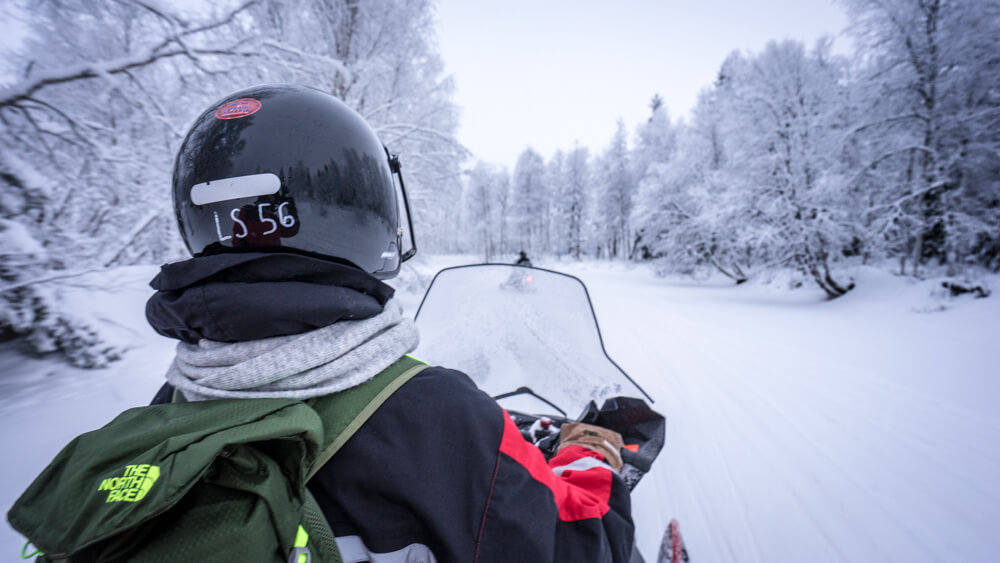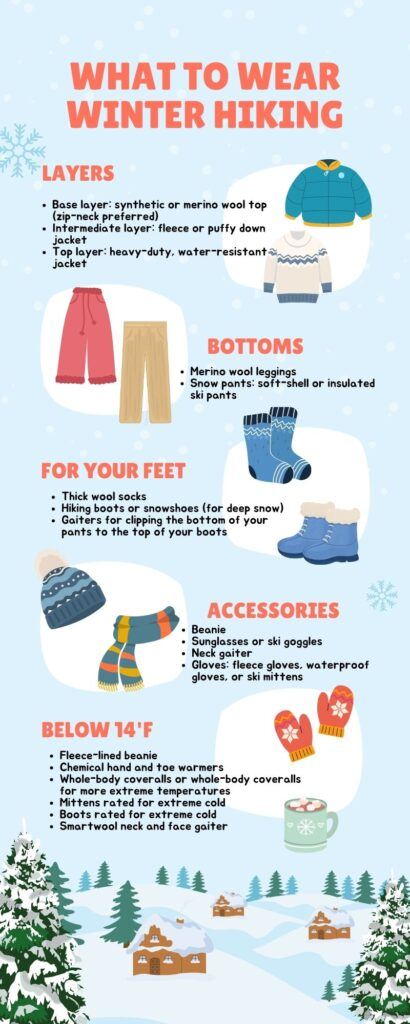When it comes to enjoying the great outdoors, there’s seldom bad weather, only bad outfit choices. It can be a little tricky to figure out what to wear when you’re hiking in winter, but this post will surely help you.
As someone who did not grow up with winter — do I have any fellow Southern Californians in the house? — I had to learn this the hard way when I moved to Berlin and started traveling in wintry places.
Then last year, when it was -25°F in the Arctic area of Canada, I was out for four hours in the middle of the night chasing the northern lights — and I wasn’t even cold!
So please don’t swear off the great outdoors just because it’s cold outside. It’s less crowded, quieter, and just as beautiful when the winter months swing around.
Here’s all you need to know about what to wear for winter hiking!
When it’s freezing to -10°C/14°F
Enjoying the outdoors when it’s cold is all about layering, and anticipating that despite it being cold, you will sweat and need to wear clothing that dries quickly.
For this reason, I stick to merino wool and waterproof outer shells, with lots of room to add or remove layers as needed:
- Base layer: synthetic or merino wool top (zip-neck preferred)
- Intermediate layer: fleece or puffy down jacket
- Top layer: heavy-duty, water-resistant jacket
- Merino wool leggings
- Snow pants: soft-shell or insulated ski pants
- Beanie
- Sunglasses or ski goggles
- Neck gaiter
- Gloves: fleece gloves, waterproof gloves, or ski mittens
- Thick wool socks
- Hiking boots or snowshoes (for deep snow)
- Gaiters for clipping the bottom of your pants to the top of your boots
This covers a wide temperature range, but it’s meant to, since winter temperatures can swing wildly from week to week, and between day and night.
When it’s -10°C/14°F to -35°C/-31°F

Once it gets so cold that you feel it in your chest, any bit of exposed skin feels brutal, and you’ve got to plug the car in well before starting it up, most people will want to stay indoors — but no need! You can still enjoy the outdoors, provided that your gear is rated for the temperature extremes you’re likely to encounter.
As you’ll see in this video, I was actually getting too hot hiking at -25°F!
Most of what I’ve been able to find in terms of the coveralls in the video and on the packing list are men’s options (which is probably what I had on too), but at this point, they are mostly unisex, anyway. Check the sizing before ordering, however, to make sure it will fit your body!
I still recommend the same base layers from the above list, but it’s important to switch up the outer layers and hand and foot coverings:
- Fleece-lined beanie
- Chemical hand and toe warmers
- Whole-body coveralls or whole-body coveralls for more extreme temperatures
- Mittens rated for extreme cold
- Boots rated for extreme cold
- Smartwool neck and face gaiter
You’ll notice that the colder the temperatures you’re likely to experience, the more expensive the gear gets. Some shops or tour agencies rent out coveralls, so only make this purchase if you’re confident you’ll use them over and over again.
Though it’s certainly possible you’ll encounter temperatures below -40, I don’t have personal experience with those and have generally heard that at that point, outdoor exposure should be limited.
Have an amazing adventure in the cold temperatures — it’s one of my favorite times to explore!

READ NEXT:
Winter Hiking: How to Enjoy the Snow and Cold
The Ideal Ski Trip Packing List
*Some of the links in this post are affiliate links, which means that if you purchase through our site, you support us at no extra cost whatsoever to you. We only recommend products we use and trust. Thanks for your support!
Rhiannon says
Super useful, thank you! It’s rally common sense, to layer up and so on, but common sense sometimes seems to be lacking during packing! (pardon the bad pun!)